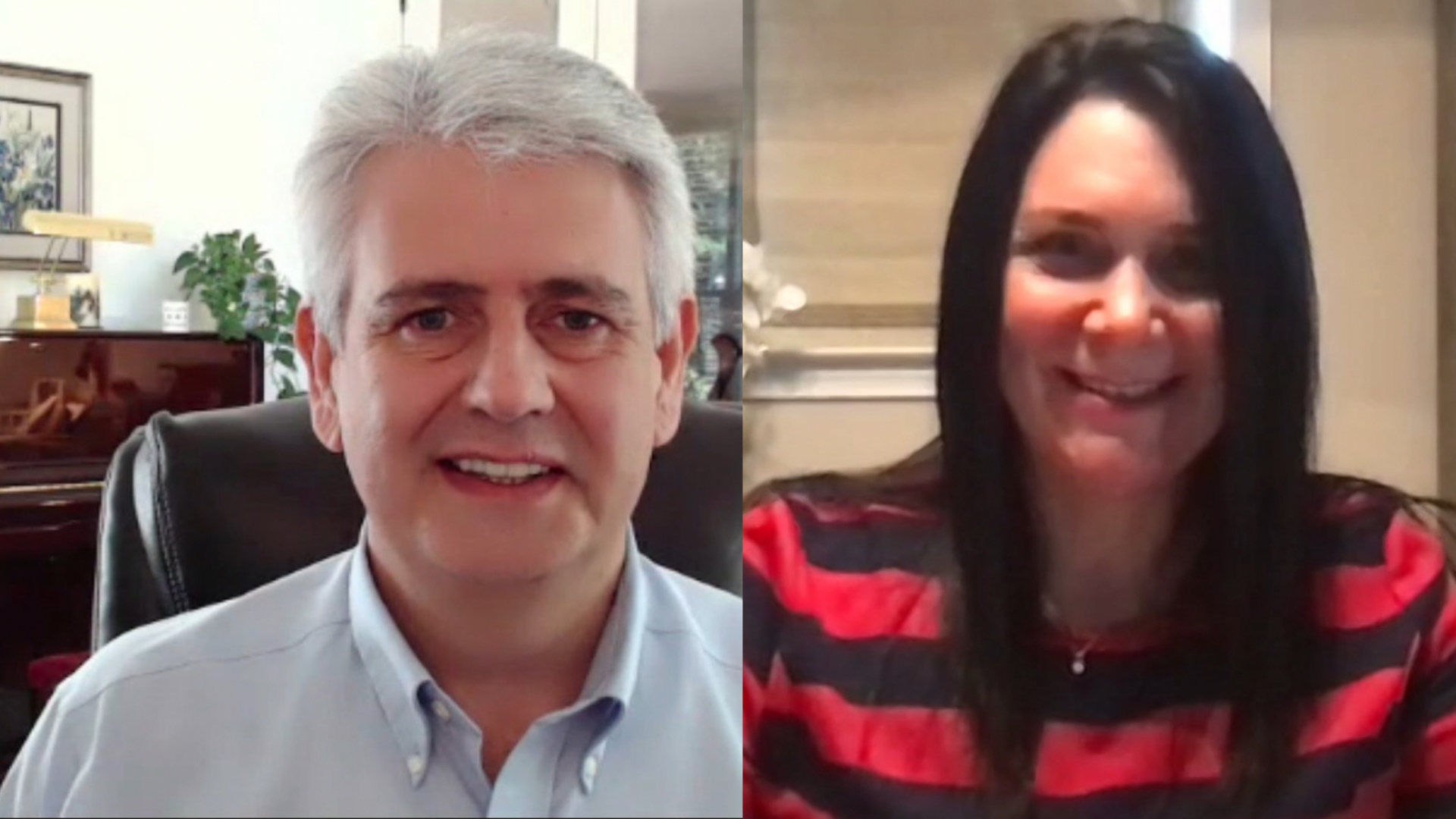 SECURITY
SECURITY
 SECURITY
SECURITY
 SECURITY
SECURITY
As the COVID-19 pandemic has taken business to new heights of technological innovation, making organizations more dependent on technology than ever before, operational resilience has become the watchword for enterprises.
IBM’s approach to this scenario is to address resilience and security together, according to Michelle Weston (pictured, right), director of security and resiliency services offerings at IBM.
“If you think about planning and how to mitigate your operational risk … security and resiliency go hand in hand; they’re the same people within the organization that are planning for that and [are] worried about it,” she said. “And so we had already started about three years ago to pull the two together and to have a unified value proposition for clients.”
Weston and Allen Downs (pictured, left), vice president of global resiliency services, spoke with Dave Vellante, host of theCUBE, SiliconANGLE Media’s livestreaming studio, during IBM Think. They discussed the growing importance of resilience and security in today’s digital world, the meaning of being resilient, how companies should be concerned about it, and the role of Kyndryl, a new IBM company, in the market. (* Disclosure below.)
Resilience is defined as the quantifiable steps that businesses need to take to respond and recover from an unplanned outage that would impact their ability to serve their clients, according to Downs. It fits directly into operational risk, which is the type of non-financial element of risk.
“Operational resilience risk is trying to identify those steps, both pre-active and reactive,” he explained.
Due to the great dependence of companies on digital systems after the pandemic, resilience and security have gained importance in the boardrooms, where directors want to know if their structures are adequate to support the business strategy, company vision and client expectations.
“[The discussion] is very much: Are we secure? Are we safe? How do we know? How safe and secure and resilient should we be? And based on the facts about how fit, safe and secure we should be, where are we today as an organization?” Downs explained.
A key point in addressing today’s digital threats, such as opportunistic cyberattacks brought on by criminals during the pandemic, is planning. Enterprises that plan resilience and security at the forefront tend to do this more effectively and efficiently, according to Weston.
A challenge that makes planning even more fundamental is that the threat surface is expanding, with the use of technologies such as 5G, edge computing and internet of things, for example. The lack of talent to tackle these issues is another challenge.
“I think this is really the fit for managed services providers like Kyndryl,” Weston said. “When it starts to go down, and you’re not sure what you’re going to do next, you want the expertise, you want to be able to phone someone, and you want to be able to rely on them to help you recover your most critical data.”
Watch the complete video interview below, and be sure to check out more of SiliconANGLE’s and theCUBE’s coverage of IBM Think. (* Disclosure: TheCUBE is a paid media partner for IBM Think. Neither IBM, the sponsor for theCUBE’s event coverage, nor other sponsors have editorial control over content on theCUBE or SiliconANGLE.)
THANK YOU